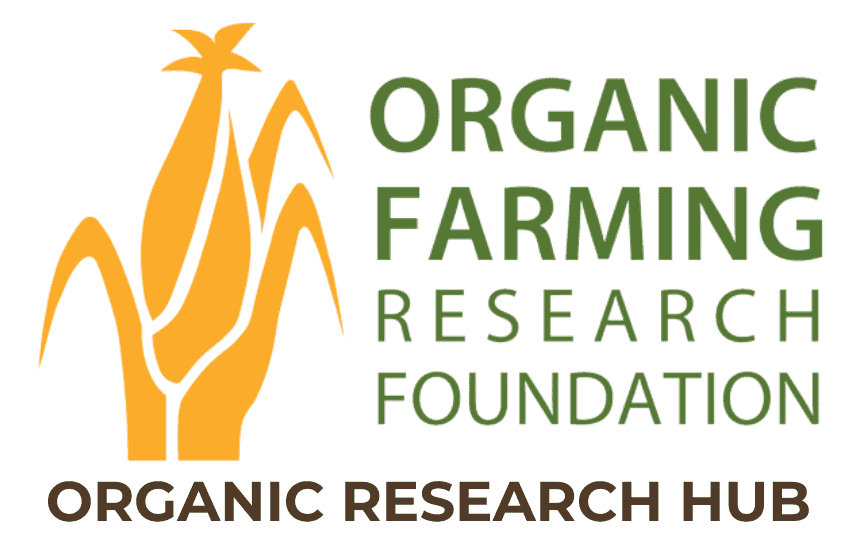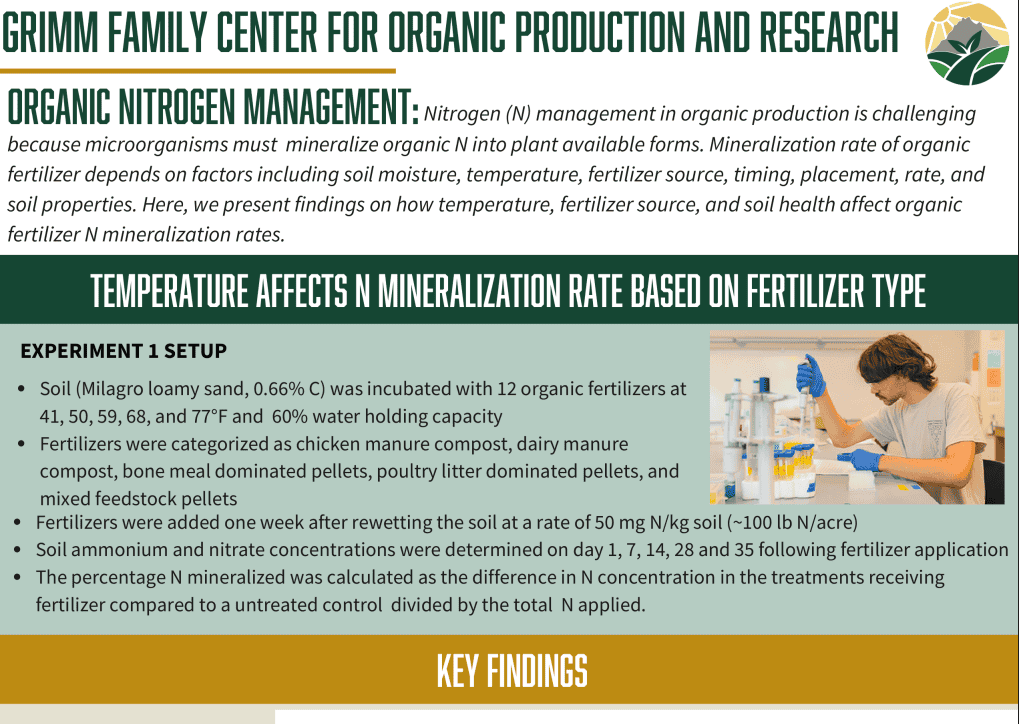Working Toward Best Management Practices for Organic Beekeeping
Project Director: Margarita Lopez-Uribe, Pennsylvania State University
Project overview
Beekeepers face severe challenges with colony health and overwinter survival due to varroa mite and other parasites and diseases of honey bees. Organic beekeepers need research-based practical information on best management practices that comply with National Organic Program (NOP) standards and maintain colony health.
This project compared three approaches: conventional (synthetic chemicals to control varroa mite and other bee parasites), organic (NOP-allowed materials for pest and parasite control), and chemical-free (no parasite control substances). Researchers convened beekeepers representing all three systems to discuss their management practices and conducted field trials at to compare colony survival and health, honey production, and net economic returns in the three systems.

Farmer takeaways
- Organic honeybee colony management maintained equivalent colony health and higher honey production and net economic returns compared to the conventional system.
- NOP-allowed miticides based on organic acids favor beneficial lactobacilli in bee pollen packets while conventional miticides reduce lactobacillus numbers.
- Not treating hives at all for mite/parasite control severely hurts colony winter survival.
- Wax in colonies foraging on organic farmland have greatly reduced pesticide residues.
Project objectives and approach
Conduct a side-by-side comparison of the impact of three management systems (organic, chemical-free, and conventional) on honey bee colony performance, immunocompetence, and parasite and pathogen levels.
Apiaries representing each of the three systems were established on eight farms in PA and WV (24 apiaries and 288 colonies total). Colonies were assessed monthly for parasitic varroa mite, and bees were sampled in spring and summer of each year for the gut parasite Nosema cernanae, viruses, and immune gene expression. In addition, the microbiota present in bee bread (packets of pollen gathered by bees) was assessed before and after miticide treatments.
Quantify cumulative pesticide residues in wax used by bees maintained with different management systems.
Building of wax comb was assessed monthly. In the fall of the second and third years of the project, beeswax samples were collected from colonies in each management system and sent to a lab for analysis for 93 agricultural and apicultural chemicals.
Conduct a cost-benefit analysis of honey bee management systems to quantify the profitability of each of these systems to beekeepers.
Detailed notes were collected on materials and labor costs for colony maintenance, bee feed, and mite control treatments, and honey production for each colony. The data were analyzed to determine net economic return per colony.
Work with the advisory panel on extension activities that will lead to behavioral changes in conventional and organic beekeepers interested in alternative management practices.
The advisory panel of 30 beekeepers guided development of experimental protocols, and played a lead role in outreach activities.
Key findings
The organic honeybee colony management system performed at least as well as the conventional system.
- The organic system resulted in colony health, winter survival, and parasite/pathogen control commensurate with the conventional system. Both conventional and organic miticides reduced varroa mites to a similar degree, while levels of the gut parasite N. cernanae were lowest in the organic system.
- Miticide treatment reduced numbers of beneficial lactobacilli in bee bread. The organic miticide treatment – formic acid – maintained higher lactobacilli levels than the conventional miticide, possibly because the lower pH favors these beneficial microbes.
The organic system yielded more honey and higher net returns than conventional, while the chemical free system had the poorest economic performance.
- In the third year, organic hives yielded 34% and 45% more honey than the conventional and chemical-free treatments, respectively.
- Net income was $238 per colony in the organic system and $165 per colony in the conventional system.
- The chemical-free system resulted in poor winter survival and colony health and gave the lowest net returns.
Pesticide residues in beeswax were minimal, especially in the organic system.
- Beeswax sampling detected 23 (of the 93) chemicals. The three most common compounds were metolachlor (herbicide), piperonyl butoxide (synergistic compound), and fenpyroximate (miticide), all of which EPA considers safe for bees.
- Beeswax from colonies foraging organically managed land had 100-fold lower pesticide residues than literature values reported for bees foraging conventionally managed land.
“One of the great achievements of this project has been creating bridges of communication between beekeepers who manage honey bees using conventional practices and beekeepers who choose to manage bees without using hard chemicals.”
Location
PennsylvaniaCollaborators
Brenna Traver, Pennsylvania State University
Robyn Underwood, Pennsylvania State University
Region
Northeast/Mid-Atlantic
Topic
Disease Management, Insect/Pest Management, Business and Marketing, Livestock Well-Being
Category
Livestock
Year Published
2024



